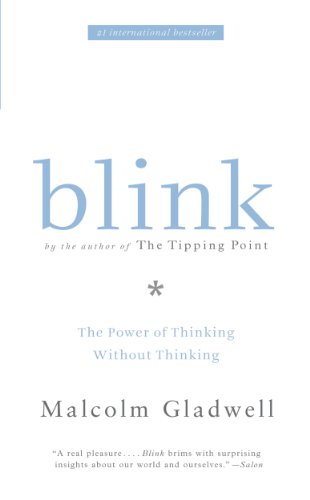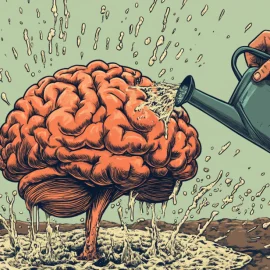

This article is an excerpt from the Shortform summary of "Blink" by Malcolm Gladwell. Shortform has the world's best summaries of books you should be reading.
Like this article? Sign up for a free trial here .
Why do conversations so often result in misunderstandings? How can I really know what’s going on in the other person’s head? How can I be a better mind-reader, and how will micro expressions help?
Micro expressions are expressions we make unconsciously. Learn how to read minds by recognizing micro expressions on people’s faces.
The Theory of How to Read Minds
We use others’ facial expressions to predict their behavior and infer their personality. Facial emotion recognition is key to learning how to read minds.
Micro Expressions
The hardest expressions to catch, and therefore interpret, are micro expressions. They’re almost imperceptible, lasting a fraction of a second.
You might be good at controlling what expressions your face makes, but a keen observer may still catch involuntary expressions that betray your true thoughts and feelings. This is how to read minds—by catching these tiny expressions that betray what the person’s words are hiding.
For example, in 1955, British Intelligence agent Kim Philby wasn’t yet exposed as a Soviet spy, but two of his colleagues were, and they defected to the Soviet Union. In a press conference, Philby denied that he’d been the one to tip off his colleagues. He did it convincingly. It would be over a decade before Philby himself defected to the Soviet Union. Most people watching weren’t great at facial emotion recognition.
But if you slow down the video of the conference, you can see Philby press his lips together in an unmistakable expression of smugness. The expression lasts only a few milliseconds. Later in the conference, there’s also a micro expression of distress.
Many people were suspicious of Philby, perhaps because their unconscious minds picked up on these micro expressions. But the conscious mind didn’t register them, so Philby got away with his espionage for years.
This is how we thin-slice people—our unconscious minds make note of subtle muscle movements in the face that are too fleeting for our conscious minds to detect. This is also how to read minds—the conscious brain needs to pay attention to what the unconscious mind is noticing.
Autism as an Analogy
Our ability to read facial signals and body language is enormously sophisticated. Most of the time, we’re really good at reading people’s minds by subconsciously picking up on subtle signals. We do this thin-slicing every day. How to read minds is to pick up on micro expressions.
Still, mistakes happen all the time. We get into arguments and hurt others because we misinterpret what they’re feeling or thinking.
People with autism have particular trouble reading nonverbal cues like facial micro expressions. We can all be “temporarily autistic” when our abilities to mind read desert us. Further below, we’ll look at situations in which temporary autism is disastrous.
Causes of Temporary Autism and Failing to Notice Micro Expressions:
- Stress clouds our awareness and can lead to temporary autism, or “mind-blindness.”
- Haste can also lead to mind-blindness.
Even split-second decisions take a few moments. Thin-slicing appears to be so fast it’s automatic, but it’s not. In the few seconds it takes to make a snap judgment, we’re gathering information and weighing it. How to read minds is to slow down and pay attention to details.
When we don’t have time to properly process information, we fall back on stereotypes. Reactions based on stereotypes are the lowest quality snap judgments. Here, we fail to catch micro expressions and we fail to read minds.
Slowing down helps us make better decisions, even quick decisions. Waiting a beat can make all the difference. This is how to read minds.
Mind Reading Gone Wrong: The Amadou Diallo Case
In 1999, four New York City Police officers fired 41 shots at Amadou Diallo, an immigrant from Guinea, in the vestibule outside his apartment. The officers mistook Diallo for a rape suspect and thought he was pulling a gun when they approached. The “gun” was a wallet. Diallo thought the plain-clothed officers were robbing him.
The officers were charged with second-degree murder. They were found not guilty.
While many view this tragedy as an incidence of racial profiling, Gladwell presents it as an extreme case of temporary autism. The officers thin-sliced in the moments before the first shot was fired, and the process went terribly wrong. The officers were not able to use the information on Diallo’s face to infer his feelings and intentions. They couldn’t read his micro expressions.
They made several thin-slicing mistakes, or mistakes in how to read minds:
- Mistake #1: Officer Carroll saw Diallo getting some fresh air on his stoop; Carroll thought he looked suspicious. He couldn’t understand why someone would be outside after midnight in that neighborhood, unless he was the lookout for a robber. He misread the situation.
- Mistake #2: When the police car backed up, Diallo didn’t move because he was curious; Carroll read this as brazenness.
- Mistake #3: Diallo turned to the side and reached into his pocket for his wallet—he thought he was being robbed and was terrified; Carroll and his team thought he was reaching for a gun and was dangerous.
Diallo was first innocent, then curious, and finally terrified. All these emotions must have been plain on his face and his in micro expressions.
Usually, we can easily tell the difference between someone who’s terrified and someone who’s dangerous. Why couldn’t the officers?
Things That Interrupt Mind Reading
Stress
Having to decide whether or not to fire your gun is a stressful situation, and despite what TV shows tell us, it’s an unusual situation even for police officers. Over 90% of officers go their entire careers without shooting.
Stress makes you temporarily autistic. It impairs your ability to accurately read others’ facial micro expressions.
It also narrows and restricts your vision, limiting the amount of information you take in. When your vision is restricted, the black edge of a wallet looks a lot like a gun.
When you see a gun, you’re not going to take your eyes off it. Part of the reason Carroll couldn’t read the terror in Diallo’s face was that he wasn’t looking at Diallo’s face. To read someone’s mind, you have to look at the micro expressions in the person’s face.
When your heart rate goes above 175, your midbrain (the intuitive, primitive part of your brain) takes over. You can’t think clearly and you become aggressive.
All of these consequences of stress hindered the officers’ ability to effectively thin-slice.
Inexperience
Three of the officers were in their 20s. Carroll was 37. They were new to the unit, the neighborhood, and the stress that came with them. They lacked experiences that would have provided rehearsals for appropriate decision making in moments of extreme stress. Clearly, this is not how to read minds.
Haste
The officers didn’t feel they had time to stop, even for a few seconds, to assess the situation. They thought their lives were in danger. Officers are taught to find cover, which buys them time to think, but there was no place to shield themselves outside Diallo’s apartment.
It seems like it would take a long time to fire 41 bullets. Didn’t the officers have time, after the first shots were fired and Diallo was on the ground, to reassess the situation?
In reality, it takes about 2 ½ seconds for four people using semi-automatic guns to fire 41 bullets. The whole encounter, from the moment Carroll noticed Diallo outside the building to the moment Carroll sat on the stoop sobbing, having realized his mistake, happened in a matter of seconds. It’s crucial that we find ways to slow down our intuitive decision-making processes so our thin-slicing has a chance to take in all the relevant information.
Keep in mind that how to read minds is to read micro expressions. Facial emotion recognition is the key to unlocking a person’s thoughts and feelings.
———End of Preview———

Like what you just read? Read the rest of the world's best summary of "Blink" at Shortform . Learn the book's critical concepts in 20 minutes or less .
Here's what you'll find in our full Blink summary :
- How you can tell if a marriage will fail, within 3 minutes
- Why your first impressions are usually surprisingly accurate
- The dark side to making first impressions, and how to avoid the,






